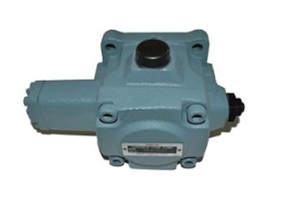When the NACHI vane pump is in use, most of them need to be matched. What are the benefits of the NACHI vane pump when it comes to inverter motors? What are the matters needing attention? We all know that NACHI vane pump often needs to use deceleration or manual speed regulation and automatic speed regulation to control the actual flow of the NACHI vane pump to meet the production requirements of the process. How to set up the inverter NACHI vane pump, what should be paid attention to? For specific problems, Leo, technical engineer of A&S Hydraulic Parts Co., Ltd., will give you a detailed introduction:
First, the general use of the method to achieve speed reduction includes gear speed control motor, gearbox deceleration, variable frequency motor, manual stepless speed regulation motor, electromagnetic debugging, etc. The variable frequency motor adopts "special frequency induction induction motor + inverter" The AC speed control mode, together with the electrical automatic control system, greatly improves the degree of mechanical automation and production efficiency, saves energy, improves product qualification rate and product quality, increases power system capacity, miniaturizes equipment, and increases comfort. Frequency conversion speed regulation has become the mainstream speed regulation scheme, which can be widely used in the pump industry continuously variable transmission.

Second, the current NACHI vane pump, high viscosity Roots pump, single screw pump, vacuum discharge gear pump with variable frequency motor is a relatively common type of reduction gear. For customers who require NACHI vane pump flow fixed, it is recommended to use geared motor and cycloidal pin gear motor. If the customer requests NACHI vane pump to adjust the flow rate during the conveying process,
Third, it is recommended to choose the stepless speed regulating motor or variable frequency motor. At the same time, the motor power requirement that needs to be selected when selecting the variable frequency motor is higher than the standard configuration power. Once again, prevent the inverter motor from starting the current when the NACHI vane pump starts to drive the current and damage the motor.
Fourth, the application characteristics of the frequency conversion motor:
1. Insulation grade, generally F grade or higher, strengthen the insulation strength of the ground insulation and the turns, especially the ability of the insulation to withstand the impact voltage.
2. For the vibration and noise of the motor, the rigidity of the motor components and the whole should be fully considered, and the natural frequency should be improved as much as possible to avoid resonance with each force wave.
3, cooling method: generally use forced ventilation cooling, that is, the main motor cooling fan is driven by an independent motor.
4, to prevent the shaft current measures, for the capacity of more than 160KW motor should be used for bearing insulation measures. Mainly due to the asymmetry of the magnetic circuit, the shaft current is also generated. When the currents generated by other high-frequency components are combined, the shaft current will increase greatly, resulting in bearing damage, so insulation measures are generally taken.
5. For constant power variable frequency motor, when the speed exceeds 3000r/min, special high temperature resistant grease should be used to compensate for the temperature rise of the bearing.
